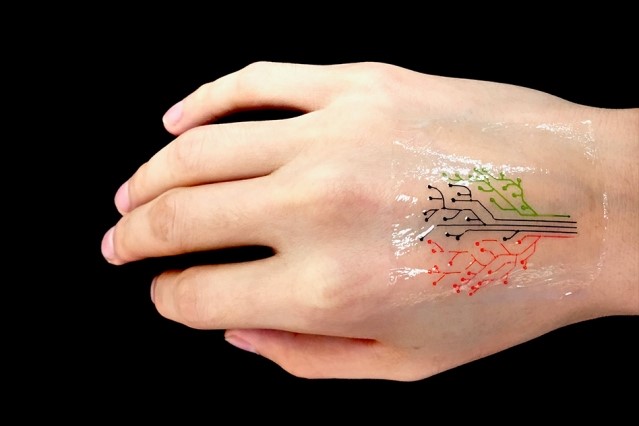
By Heather Hamilton, contributing writer
MIT researchers unveiled a 3D-printable hydrogel that can sense and respond to stimuli via bacteria that are genetically programmed to light up upon contact with some chemicals, which means that the hydrogel could be used as a living sensor. The research, which was published in Advanced Materials , was supported by the Office of Naval Research, National Science Foundation, National Institutes of Health, and MIT Institute for Soldier Nanotechnologies.
Together, hydrogel and nutrients are mixed, which allows cells to be printed layer by layer into a 3D interactive structure. Researchers printed a tree pattern on the hydrogel, in which each section of the tree’s branches contained specific bacteria sensitive to different chemicals. Once those chemicals were coated on a person’s skin, the 3D-printed tree was placed on top. On contact, the bacteria glowed.
Led by Xuanhe Zhao, the Noyce Career Development Professor in MIT’s Department of Mechanical Engineering, and Timothy Lu, an associate professor of biological engineering, electrical engineering, and computer science, the researchers believe that this method can be utilized for materials in wearable sensors and interactive displays.
The researchers are also able to predict interactions between cells within a given 3D structure under various conditions, which can be used as a guide in designing responsive living materials.
Previously, such research had been attempted using mammalian cells, which are too fragile. By using bacteria, the team took advantage of tough cell walls that survive in harsh conditions — like being launched through a 3D printer. Bacteria is also compatible with a variety of hydrogels, which allowed the team to identify the one most compatible with hosting cells, eventually settling on a hydrogel with pluronic acid.
The 3D ink contains bacteria, hydrogel, and nutrients to sustain the cells. “We found that this new ink formula works very well and can print at a high resolution of about 30 micrometers per feature,” says Zhao. “That means that each line we print contains only a few cells. We can also print relatively large-scale structures, measuring several centimeters.”
Once pressed on the hand, the ink would light up when the bacteria sensed the corresponding chemical stimuli. The bacteria communicated with each other, too — researchers programmed certain cells to light up upon receiving a specific signal from another cell.
Engadget reports that future uses might include applications as living sensors to monitor inflammatory biomarkers or ingestible sensors that can affect gut microbiota, as well as pH, pollutant, or temperature environmental sensors.
Researcher Hyunwoo Yuk explains that the technique may be used to print living computers. “This is very future work, but we expect to be able to print living computational platforms that could be wearable.”
In the short-term, researchers hope to make flexible patches and stickers, used as customized sensors to detect any number of chemical and molecular compounds. Additionally, they expect that the technique will find a home in drug capsules and surgical implants.
Sources: MIT News, Advanced Materials, Engadget
Image Source: MIT News
Advertisement





